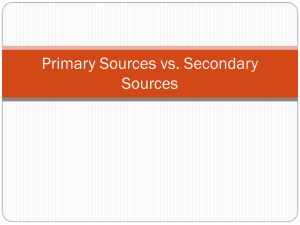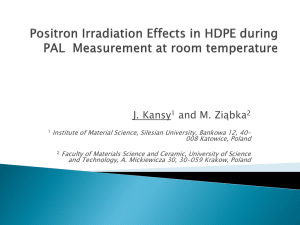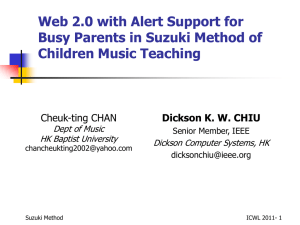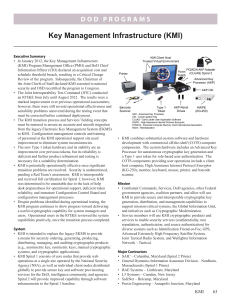PowerPoint
advertisement
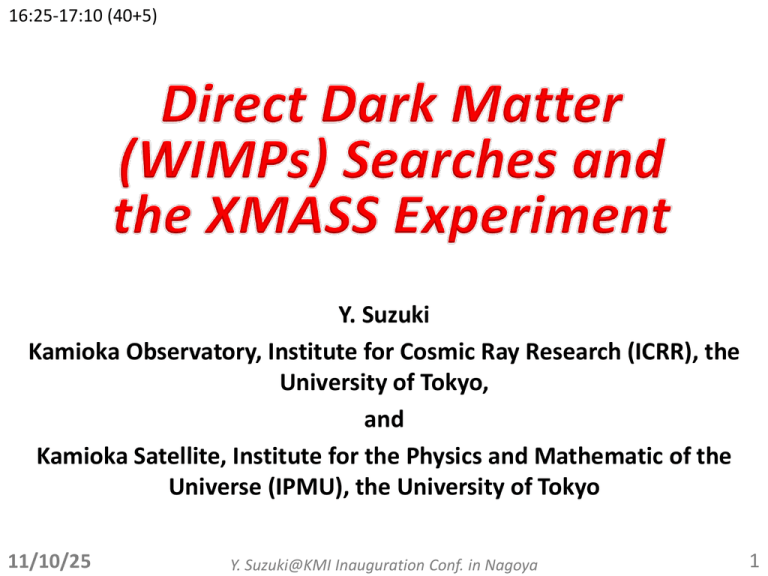
16:25-17:10 (40+5) Y. Suzuki Kamioka Observatory, Institute for Cosmic Ray Research (ICRR), the University of Tokyo, and Kamioka Satellite, Institute for the Physics and Mathematic of the Universe (IPMU), the University of Tokyo 11/10/25 Y. Suzuki@KMI Inauguration Conf. in Nagoya 1 “XMASS Experiment” Y. Suzuki, hep-ph/0008296 XMASS: Multi-purpose liq. Xenon detector (10 ton fiducial mass(2.5mf)) – Xenon MASSive detector for Solar neutrino • pp-solar neutrinos: n+e n+e – Xenon neutrino MASS detector • Double beta decay 136Xe 136Ba + 2e- – Xenon detector for Weakly Interacting MASSive Particles • Dark Matter: c+Xe c+Xe Phase-I: 100 kg fid. dedicated for dark matter search • Construction was completed • Under commissioning in the Kamioka Underground Observatory • Conducted by Kamioka Observatory (ICRR, Tokyo), IPMU(Tokyo) Kobe, Tokai, Gifu, STEL(Nagoya), Yokohama National,, Miyagi U. of Ed and Korean institutions (KRIS, Sejong): 10 institutes & 41 Collaborators We will discuss ’phase-I XMASS’ later in my talk. 11/10/25 Y. Suzuki@KMI Inauguration Conf. in Nagoya 2 Outline • Brief Introduction • Direct Dark Matter (WIMPs) Search Experiments • Status of the XMASS experiment 11/10/25 Y. Suzuki@KMI Inauguration Conf. in Nagoya 3 Coma Cluster Why people believe in Dark Matter Evidence at the different scale of the Universe • Rotation curve of a galaxy • Cluster of Galaxies – luminocity vs velocity – Gravitational lensing • CMB and so on….. 11/10/25 Y. Suzuki@KMI Inauguration Conf. in Nagoya 4 Why people believe in Dark Matter Evidence at the different scale of the Universe • Rotation curve of a galaxy • Cluster of Galaxies – luminocity vs velocity – Gravitational lensing First indicated that invisible matter exist in aNGC6503 galaxy by Vera Rubin in 1972 • CMB and so on….. 11/10/25 Y.Sofue and V. Rubin Astroph/0010594v2 Many Galaxies Total Dark Matter Luminous Matter Rotation vetocity Y. Suzuki@KMI Inauguration Conf. in Nagoya 5 Why people believe in Dark Matter Evidence at the different scale of the Universe • Rotation curve of a galaxy • Cluster of Galaxies – luminocity vs velocity – Gravitational lensing • CMB and so on….. 11/10/25 • First in 1933: Fritz Zwicky Luminous matter << matter from orbital velocities Virial theorem Y. Suzuki@KMI Inauguration Conf. in Nagoya 6 Why people believe in Dark Matter Evidence at the different scale of the Universe • Rotation curve of a galaxy • Cluster of Galaxies – luminocity vs velocity – Gravitational lensing • CMB and so on….. 11/10/25 Matter distribution of the foreground (lenz) galaxies Y. Suzuki@KMI Inauguration Conf. in Nagoya 7 Why people believe in Dark Matter 2.725 oK -0.0002 oK Evidence at the different scale of the Universe • Rotation curve of a galaxy • Cluster of Galaxies – luminocity vs velocity – Gravitational lensing • CMB and so on….. Ordinary Matter(4%) Dark Matter 23% Dark Energy 73% 11/10/25 Y. Suzuki@KMI Inauguration Conf. in Nagoya 8 Dark Matter Candidates • Gravitationally interacting • Neutral (not charged) • Stable or long lived WDM = 0.23 • Cold or Warm (not hot) large scale structure • non-Barionic CMB, BBNS 11/10/25 Physics beyond The Standard Model • • • • • • AXION AXINO Gravitino Sterile Neutrinos WIMP ….. Y. Suzuki@KMI Inauguration Conf. in Nagoya 9 Detection of DM other than Gravitational Effect • Indirect Detection – Annililation & decay • Charged Particels – PAMELA, Fermi, ATIC, HESS.. • Gammas • Neutrinos • Direct Detection – Scattering in the laboratory detectors – AXION searches… • Accelerator: Creation and Measurement 11/10/25 Y. Suzuki@KMI Inauguration Conf. in Nagoya 10 Today, we concentrate on direct search experiments for WIMPs • Natural candidates from SUSY ??? LHC • Many experiments to look for WIMPs are conducted – For the last couple of years, direct dark matter experiments have been very exciting. • Indications of low mass DM (a few ~ 10 GeV)? • By DAMA/LIBRA, CoGeNT, CRESST-II – Limits and exclusions? • By CDMS-II, EDELWEISS, XENON10, XENON100 – Very strong tensions ! • In my talk, I will not explain the various efforts to reconcile the conflicting experiments. • Instead, I will discuss on what experimentalists should do in order to clarify or strengthen the observed results. 11/10/25 Y. Suzuki@KMI Inauguration Conf. in Nagoya 11 Galactic Dark Matter • Isothermal Halo Model (Standard Halo Model) – a single component isothermal sphere with a Maxwellian velocity distribution Typical Values: – V0 = 220km/s – <vDM2> = 270km/s – Escape speed, vesc ~ 550km/s – Density: rx = 0.3 GeV/cm3 11/10/25 Values and uncertainties of these astrophysical parameters have been revisited and reevaluated, and still under the discussion Y. Suzuki@KMI Inauguration Conf. in Nagoya 12 Nuclear Recoil • Direct searches : Observe Nuclear Recoils For 10 GeV WIMPs Event Rate Dark Matter Direct Detection – c+Nc+N 0 • Recoil Energy: – 1~100 keV – For low mass DM, sp. become very soft for large target masses like Xe, Ge,, Event Rate Kinetic energy of DM 10 20 30 For 100 GeV WIMPs 40 50 • Loose efficiency unless lowering 13 0 20 40 60 80 100 the threshold Recoil Energy (keV) 11/10/25 Y. Suzuki@KMI Inauguration Conf. in Nagoya Event Rate TYPICAL: • ~0.1 ev/day/100kg-Xenon for mc = 50 GeV and sSI=10-44 cm2 with 10keVNR threshold, 30% eff • Seasonal variations of the velocity: ±30km/s < ~ 10% modulation effects WIMPs June Earth ~ + 30km/s Cygnus SUN V0~220km/s – depend upon spectrum shape, trigger efficiency, analysis cuts and so on 11/10/25 Y. Suzuki@KMI Inauguration Conf. in Nagoya 60O ~ - 30km/s December 14 Direct Search Experiments • Various Detection Technology – Scintillation, Heat-Phonon and Ionization – Usually combined technologies to reduce backgrounds – Self-shielding may work for some materials CaWO4,Al2O3, ROSEBUD BGO, LiF CRESST-II, EURECA Scintillation PICASSO, COUPP Heat-Phonon CaWO4, CRESST I CDMS ULTIMA 3He NAIAD, ZEPLIN-I, DAMA/LIBRA XMASS, DEAP/CLEAN NaI, Xe, Ar ZEPLIN-II,-III, XENON LUX, WARP, ArDM, Xe, Ar SIGN 11/10/25 Bubble Ge, Si EDELWEISS, EURECA Ionization IGEX, CoGeNT Ge, Si Y. Suzuki@KMI Inauguration Conf. in Nagoya Track CF4, CS2 DRIFT, DM-TPC Emulsion, NIMAC NEWAGE 15 Backgrounds Key Issue of the experiments ! Cosmic Rays Cosmo-genic, Spallation products Go deeper site Many: • detector dependent • but common techniques to reduce backgrounds Rn Rn Shields Pd, Polyethylene, Water,… External BG (g, n) Rn 11/10/25 Internal BG: Detector dependence Rn U/Th, K, ….. purification Cosmo-genic Y. Suzuki@KMI Inauguration Conf.CR in Nagoya Shields&Detector parts External BG, g, n, b, a U/Th, K,… Material screening Purification 16 Current Experimental Situation 10-39 CoGeNT DAMA EDELWEISS-II 10-45 11/10/25 Y. Suzuki@KMI Inauguration Conf. in Nagoya 17 Current players of the game Positive Indication Experiment∂ Target Threshold DAMA/LIBRA NaI 2.0 keVee CoGeNT Ge 0.5 keVee CRESST CaWO4 10.0 keV Total Exposure Recoil Identification Main body of Signal ? Modul ation 427,000 kg-days (NR+EM) ー (NR+EM) by fit w/BG NR by fit w/BG ー 140 kg-days >700 kg-days Negative and set limit Experiment∂ Target Threshold CDMS-II Ge/Si 10.0 keV CDMS-II (LE) Ge EDELWEISS Ge XENON100 Xe XENON10 (LE) Xe 11/10/25 Total Exposure Recoil Identification 612 kg-days NR 241 kg-days (NR+reducedEM) 384 kg-days NR 8.4 keVNR 1471 kg-days NR 1.4 keVNR 15 kg-days 2.0 keVNR 20.0 keV Main body of Signal ? Modul ation (NR+reducedEM) Y. Suzuki@KMI Inauguration Conf. in Nagoya 18 DAMA/LIBRA Early ‘96 Residuals (cpd/kg/keV) Sept ‘09 + 0.02 - 0.02 2~6 keV 1000 2000 3000 • DAMA/LIBRA: High purity low BG NaI 4000 5000 R.Cerulli@TIPP2011 – 250kg NaI(Tl) for DAMA/LIBRA • Total exposure: 1.17 ton-yr (13 cycles) – 427,000 kg-days Result Modulation (8.9s) – Sk=S0+Smcosw(t-t0) – Amplitude(Sm): for 2~6 keV 0.0116±0.0013 cpd /kg /keV (dru) View at the end of DAMA/LIBRA 19 11/10/25 Y. Suzuki@KMI Inauguration Conf. in Nagoya Question: Where is the un-modulated part of signal, S0 ? 3.2keV Auger from 40K EC(10%) 1.46MeV g escape Rate (dru) Ex. M. Fairbairn and T. Schwets, arXiv:0808.0704v2[hep-ph] 1 Backgrounds 0.5 0 0.04 0.03 0.02 0.01 0 -0.01 Spectrum Un-modulated signal 2 4 6 8 dru Modulated Spectrum 0 2 4 6 Energy (keV) Also similar study: V. A. Kudryavtsev et al. J. Of Phys. Conf. Ser. 203(2009)012039 11/10/25 8 • Must be in somewhere underneath of the spectrum ! • In most of the elastic scattering cases, S0(E) monotonically goes down as energy increase, then backgrounds must sharply goes down below 3~4 keV. This may not be natural Simple Elastic Scattering interpretation may have a internal inconsistency? -> Inelastic ? also strong tension -> Other scenarios ??? Y. Suzuki@KMI Inauguration Conf. in Nagoya 20 CoGeNT Counts / 30 days Coherent Germanium Neutrino Telescope 0 • P-type Point Contact (PPC) germanium detectors: 440g – High resolution (low C) • Threshold ~ 0.4 keVee (lowest) • But no Nuclear Recoil separation • BG: Reject surface events irreducible excess below 3 keV 11/10/25 100 200 300 400 500 Days since Dec-3, 2009 • 442 effective days, ssuming all the unknown excess is ‘signal’ Modulation (0.5 – 3.0 keVee): • 2.8 s • Amplitude: 16.6±3.8% • Minimum: Oct 16±12 d Y. Suzuki@KMI Inauguration Conf. in Nagoya 21 What should we watch Rise Time t10-90ms 10 Different detector @Chicago • (n+) 1mm: dead, 1mm transition (~external g’s) 1 rise time difference to discriminates 0.1 10 – bulk (0.3 ms ~ 2 ms @low energy) – Surface (2 ms ~ 4ms @low energy) 1 0.1 Backgrounds are crucial for all the DM experiments • Surface events (CoGeNT) 90% acceptance for bulk events 0 2 4 6 8 10 12 Ionization Energy (keVee) 11/10/25 • They said that any such contamination should be modest • Calibration was done for different detector Need clear and quantitative evaluation of the leakage from the surface event Y. Suzuki@KMI Inauguration Conf. in Nagoya 22 CRESST-II • CaWO4(Multi-material target) – up to 10 kg, 33 crystals, (0.3kg each) – phonon (~10 mK) – Scintillation Light sensor Reduced light output for nuclear recoils Light output decreases with increasing mass number of recoiling nucleus • Data used (2009 – 2011) – 730kg*days – 8 detector modules 11/10/25 Y. Suzuki@KMI Inauguration Conf. in Nagoya Crystal & phonon sensor e/g a O W 23 • O-band events – 67 events Degraded a 210Po 206Pb(103keV)+a • 4 source of BG – Leakage from e/g band – Leakage from a related • Degraded a events – Neutron events (O) – Pb recoils: 210Po 206Pb(103keV)+a(out) • “room for signal” – 36 ~ 44 % 11/10/25 Y. Suzuki@KMI Inauguration Conf. in Nagoya 24 Current Experimental Situation 10-39 CoGeNT DAMA EDELWEISS-II 10-45 11/10/25 Y. Suzuki@KMI Inauguration Conf. in Nagoya 25 Current players of the game Positive Indication Experiment∂ Target Threshold DAMA/LIBRA NaI 2.0 keVee CoGeNT Ge 0.5 keVee CRESST CaWO4 10.0 keV Total Exposure Recoil Identification Main body of Signal ? Modul ation 427,000 kg-days (NR+EM) ー (NR+EM) by fit w/BG NR by fit w/BG ー 140 kg-days >700 kg-days Negative and set limit Experiment∂ Target Threshold CDMS-II Ge/Si 10.0 keV CDMS-II (LE) Ge EDELWEISS Ge XENON100 Xe XENON10 (LE) Xe 11/10/25 Total Exposure Recoil Identification 612 kg-days NR 241 kg-days (NR+reducedEM) 384 kg-days NR 8.4 keVNR 1471 kg-days NR 1.4 keVNR 15 kg-days 2.0 keVNR 20.0 keV Main body of Signal ? Modul ation (NR+reducedEM) Y. Suzuki@KMI Inauguration Conf. in Nagoya 26 CDMS-II • Ge(&Si) detector (~10mm thick and f=76mm) • 230g x19 ~ 4 kg • Ionization and phonon (<50mK) – Ionization yield 1 in 104 raj. for g’s – Timing cut surface events (>106 raj.) • • • • Bulk 10 keV threshold & < 100keV Data: 612kg-days 2 events found Backgrounds: 0.9±0.2 – 0.8±0.1±0.2 surface events – 0.1 neutron events 11/10/25 Y. Suzuki@KMI Inauguration Conf. in Nagoya Detector: T3Z4 27 EDELEWEISS-II ‘Fiducial’ 400g x 10 Ge= 4 kg (1.6kg:fid.) Phonon+ charge collection electrodes w/ interleaved geometry (Ge-ID) reject of near surface events Rej, Rate: 6x10-5 • Threshold: ENR < 20keV • ~14 months of running: 384kg*day • Found: 5 Nuclear Recoil events • < 3.0 BG events g-BG leak (<0.9), surface (0.3), muon induced(0.4), neutron(1.4) • Combined Analysis w/ CDMS-II • Next Step: 99.99% rejection av. & worst – Next EDELWEISS-III • 26kg (40 x 800g) aiming 10-45cm2 (SI) • Start installation in 2012 Degraded 11/10/25 a’s ? Y. Suzuki@KMI Inauguration Conf. in Nagoya Ionization thr. of 2 keVee av. & worst 28 XENON-100 2 phase liquid Xenon detector • Simultaneous detection of light (S1) and charge (as S2) – Ionization e’s S2 (prop. Scinti.) S2/S1 NR and EM discri: ~1/1000 100.9 live days (till June in 2010) w/48 kg fiducial mass (62kg) 1471kg-day 3 events remain after S2/S1 selection (99.75% EM rejection) Expected BG: 1.8±0.6 – 85KR: 1.14±0.48 – Others: 0.56(+0.21/-0.27) 99.75% 8.4 keV • • • • 10 20 30 40 Energy [keVNR] 50 (S2/S1)WIMP < (S2/S1)g Y. Suzuki@KMI Inauguration Conf. in Nagoya 29 Current Experimental Situation 10-39 CoGeNT DAMA EDELWEISS-II 10-45 11/10/25 Y. Suzuki@KMI Inauguration Conf. in Nagoya 30 Current and Future direct WIMP Search experiments 35 programs (not complete list : sorry for those projects I have missed) Experiment s site Target & mass technology ZEPLIN-III Boulby Xe: 8kg XENON100 LNGS XENON1T Achieved (cm2) Sensitivity (cm2) Status & comments Year to start two phase SI: 10-43 Stop in 5- 2011 results soon Xe: 48kg two phase SI: 7x10-45 On going LNGS Xe: 1t two phase SI: 10-47 2015 XMASS Kamioka Xe: 100kg single phase SI: 10-45 XMASS-1.5 Kamioka Xe: 1ton single phase SI: 10-46 2013 XMASS-II Kamioka Xe: 10ton single phase SI: 10-47 2016 PANDA-X Jing Ping Xe: 25kg two phase SI: 10-45 > 2013 LUX SUSEL Xe: 100kg two phase SI: <10-45 LZS SUSEL/SN O Xe: 1ton two phase SI: 10-47 WARP LNGS Ar:140kg two phase SI: 5x10-45 commissioning DarkSide50 LNGS DAr: 50kg two phase SI: 10-45 prototype ArDM Canfranc Ar: 850kg two phase DEEP3600 SNOLAB Ar: 1ton Single phase SI: 10-45 2012 MiniCLEAN SNOLAB Ar: 150kg Single phase SI: 10-44 2011 DARWIN Europe Ar or Xe: tons two phase SI: <10-47 MAX DUSEL Ar and Xe Xenon commissioning Surface lab On going 2012 2015 Ar 11/10/25 Prototype SI:<10-47 Y. Suzuki@KMI Inauguration Conf. in Nagoya 2011 R&D 31 Experiments site Target & mass technology Sensitivity (cm2) Achieve (cm2) Status & comments Year to start Super-CDMS SOUDAN Ge: 15kg char+phonon SI: 5x10-45 2011 Super-CDMS SNOLAB Ge: 100kg char+phonon SI: 3x10-46 2015 CoGeNT-C4 SOUDAN Ge: 4kg charge CDEX Jing Ping L PC-Ge:10 kg charge SI: 10-43 SD: 2x10-37 Ge installation 2011 1kg test Bubble Chamber PICASSO SNOLAB C4F10: 2.6kg BC On going SIMPLE Rustrel C2ClF5: 26 kg BC Test 0.2kg Install 2012 COUPP SNOLAB 60kg BC 4kg test 2011 Scintillation (+phonon) DAMA LNGS, NaI: 250kg Scintillation SI: 10-40 On going KIMS Yang Yang CsI: 104.4kg Scintillation SD:10-38 On going CINDMS Jing Ping L CsI(Na) Scintillation CRESST-II R&D Sintill+phonon On going ROSEBUD Canfranc Al2O3 etc. Scintill+phonon R&D DM-Ice South pole NaI:>250kg Scintillation Test DAMA Prototype: 17kg ? EURECA LSM Multi-T: 1ton many SI: 10-46 Phase-I: 150kg 2015 Boulby CS2:4kg,24m3 TPC SD: 10-40 CF4 PMT+TPC Prototype test Tracking Drift-III DM-TPC ? NewAGE Kamioka CF4 microTPC Prototype test MiMac LSM CF4 microTPC Prototype 11/10/25 Cygnus World? Tracking Y. Suzuki@KMI Inauguration Conf. in Nagoya White paper 2011 1m3 32 STATUS OF THE XMASS EXPERIMENT 11/10/25 Y. Suzuki@KMI Inauguration Conf. in Nagoya 33 The phase-I XMASS detector • Detector – – – – Single phase (scintillation only) liquid Xenon detetor Operated at -100oC and ~0.065MPa 100 kg fid. mass, [835 kg inner mass (0.8 mf)] Pentakis dodecahedron 12 pentagonal pyramids: Each pyramid 5 triangle – 630 hex & 12 round PMTs with 28-39% Q.E. – photocathode coverage: > 62% inner surface 1.2m diameter Developed 11/10/25 with Hamamatsu Y. Suzuki@KMI Inauguration Conf. in Nagoya 34 Characteristics and Aim • Low energy thresholed < 5keVee (~25keVNR) and good energy/vertex resolution High light yields (~NaI) and high photo-cathode coveragy • Possible low BG Gas/liquid purification during the running • Study Spin dependence (option) Easier isotope separation (odd $ even) bb-decay Mostly Odd • Aim Mostly Even – Backbround: 10-4 dru (ev/kg/keV/day) – 10-45cm2 SI for ~100GeV WIMPs Challenge to reduce backgrounds 11/10/25 Y. Suzuki@KMI Inauguration Conf. in Nagoya Calculation Line for 10-42 cm2 (50GeV / 100GeV) Background level pp-solar n 7Be solar n 35 External backgrounds • g, n from Rocks – Water tank (active: 72 20” PMTs) 11 m • > 4 m water shields • g: 103 recuction by 2m – smaller than PMT BG • n << 10-4/d/kg (by 2m) >4m • g, n from PMT, detector parts – Low BG PMT (~1/100 of regular PMT) – Material selection by HPGe detector – Self-Shields 10 m Self shielding effect • < 10-4 /keV/day/kg MC simulation BG/PMT with base parts U chain 0.70 ± 0.28 mBq Th chain 1.5 ± 0.31 mBq 40K < 5.1 mBq 60Co 2.9 ± 0.16 mBq 11/10/25 Y. Suzuki@KMI Inauguration Conf. in Nagoya 36 Internal backgrounds Off gas Lower tmp • Kr (Qb = 687 keV) – Distillation: Kr has lower boiling point – 5 orders of magnitude reduction (test) • 0.1ppm1ppt with 4.7kg/hr K. Abe et al. for XMASS collab., Astropart. Phys. 31 (2009) 290 – Distillation: 10 days before filling into the detector (~ 1 ton) • Rn – target value • • Higher tmp 222Rn: target 1.0mBq for 835 kg inner volume 220Rn: target 0.43mBq for 835 kg inner volume Xe – Filtering by circulation • liquid gas (30litter-GXe/min) liquid – Charcoal • liquid (a few litter-LXe/min) – Understady 11/10/25 Y. Suzuki@KMI Inauguration Conf. in Nagoya 37 0 12' ' 3' *- 4526% (- 7 . /% 86217 &95' *: % 42% 6; - 9*26< Expected sensitivity 3@M => scp>2x10-45 cm2 Spin Independent % % B44CD,,: 7 4229' EF12G6E*: ; ,% % % ) &54' H*99I# &6: 5- IJ 595CC565 for 50-100GeV WIMP, 90%C.L. 1yr exposure, 100kg FV, BG: 1x10-4 /keV/d/kg Scintillation efficiency: 0.2 Expected energy spectrum 3K> => 3K. => 1 year exposure scp=10-44 cm2 50GeV WIMP 3KK => - - - XMASS 5keVee th.(100d) - - - XMASS 2keVee th.(100d) 3KL ==>?=. . @A=>= => = => 11/10/25 . => ! "# $% # &' ' % () *+ ,- . / @ => Y. Suzuki@KMI Inauguration Conf. in Nagoya Black:signal+BG Red:BG 38 Detector Consturuction 11/10/25 Y. Suzuki@KMI Inauguration Conf. in Nagoya 39 Joining two halves 11/10/25 Y. Suzuki@KMI Inauguration Conf. in Nagoya 40 クリックしてタイトルを入力 • クリックしてテキストを入力 11/10/25 Y. Suzuki@KMI Inauguration Conf. in Nagoya P-01 41 Detector performance Reconstruction Reconstructed energy distribution real data simulation Reconstructed position Real Data Simulation 122keV ~4% rms 136keV 59.3keV of W • • Reconstruction: • pe-distribution, hit pattern (and timing) energy, position (and particle id) High p.e. yield: 15.1±1.2 pe/keV Energy resolution for 57Co (122keV, g-rays) • 11/10/25 4% rms Position Resolution for 57Co (122keV g rays) 1.4cm rms (0cm: center) 1cm rms (±20cm) Y. Suzuki@KMI Inauguration Conf. in Nagoya 42 Internal BG (Rn) • 222Rn: Identify 214Bi 214Po 210Pb decays – 214 Po decays with 164 ms half life – b and a coincidence – 8.2±0.5mBq in the inner volume Fitting with 1st event (214Bi b) 2nd event (214Po a) an expected decay curve Tail due to saturation 100 500 1000 Time difference (ms) • 220Rn: Identify 220Rn 216Po 212Pb decays – 216Po decays with 0.14sec half life – two a’s with short coincidence – Upper limit <0.28mBq (90%C.L.) 11/10/25 Y. Suzuki@KMI Inauguration Conf. in Nagoya 43 Summary for XMASS 11/10/25 Y. Suzuki@KMI Inauguration Conf. in Nagoya 44 Summary • Direct dark matter search experiments are in a very exciting and interesting stage: Some indications for low mass DM, but there are conflicting results. • People tried to reconcile those results: Many many papers. – Inelastic DM, Isospin violating DM, Mirror DM, Composite DM, Resonant DM, SD inelastic DM, Complex Scalar DM, Astrophysical parameters, and so on…. • But experimentally we need more studies on those data and understand backgrounds especially. • XMASS is now in commissioning stage and hope that we will show some results in a few months. 11/10/25 Y. Suzuki@KMI Inauguration Conf. in Nagoya 45 END 11/10/25 Y. Suzuki@KMI Inauguration Conf. in Nagoya 46 CDMS-II low threshold • 2 keV threshold • Only 8 low BG Ge detectors – Others: veto • 241kg-days • Remaining event shape: similar to a WIMP signal, but, Un-rejected electron events 2 10 Recoil Energy (keV) 100 total backgrounds – Zero-charge events (close to edge) • Charge by side wall, not readout electrode • Phonon fiducialization does not work @LE remain as zero ch ev. – Remaining surface events – bulk events – 1.3 keV lines (L-shell EC) 11/10/25 2 5 10 15 20 Recoil Energy (keV) Recoil energy scale assumes that the ionization signal is consistent with a 47 Y. Suzuki@KMI Inauguration Conf. nuclear in Nagoyarecoil CDMS-II low threshold • 2 keV threshold • Only 8 low BG Ge detectors – Others: veto DAMA • 241kg-days 2 10 100 • Remaining event shape: similar Recoil Energy (keV) to a WIMP signal, but, 4 events 6 8 10total backgrounds 12 Un-rejected electron 2) WIMP mass (GeV/c – Zero-charge events (close to edge) • Charge by side wall, not readout electrode • Phonon fiducialization does not work @LE remain as zero ch ev. – Remaining surface events – bulk events – 1.3 keV lines (L-shell EC) 11/10/25 2 5 10 15 20 Recoil Energy (keV) Recoil energy scale assumes that the ionization signal is consistent with a 48 Y. Suzuki@KMI Inauguration Conf. nuclear in Nagoyarecoil Comparison between CDMS and CoGeNT (Germanium detectors) • Acceptance corrected • CDMS selected as NR • CDMS: Consistent with backgrounds CoGeNT data is corrected for quenching factor [D.Hooper et al. PRD,82,123509(10)]. – Surface, zero charge, EM bulk…. • CoGeNT: no separation for NR and EM. • If CoGeNT ‘signal’ is NR – inconsistent with CDMS, and majority is backgrounds. • If CoGeNT ‘signal’ is EM – CDMS cannot tell much. 11/10/25 Y. Suzuki@KMI Inauguration Conf. in Nagoya 49
